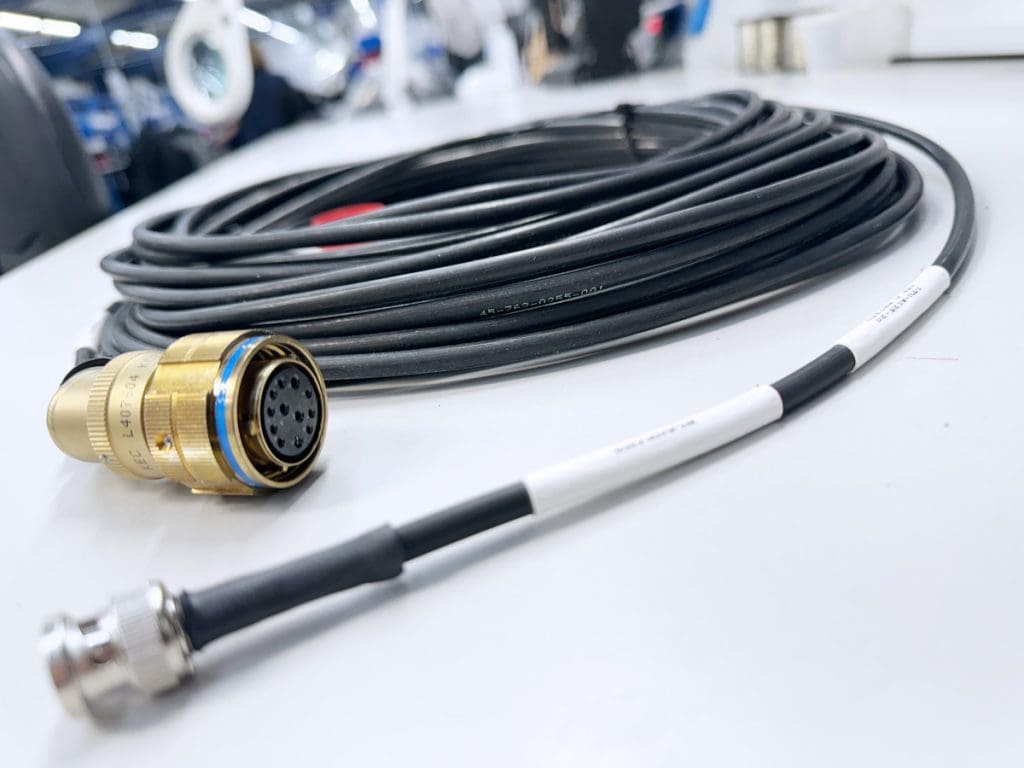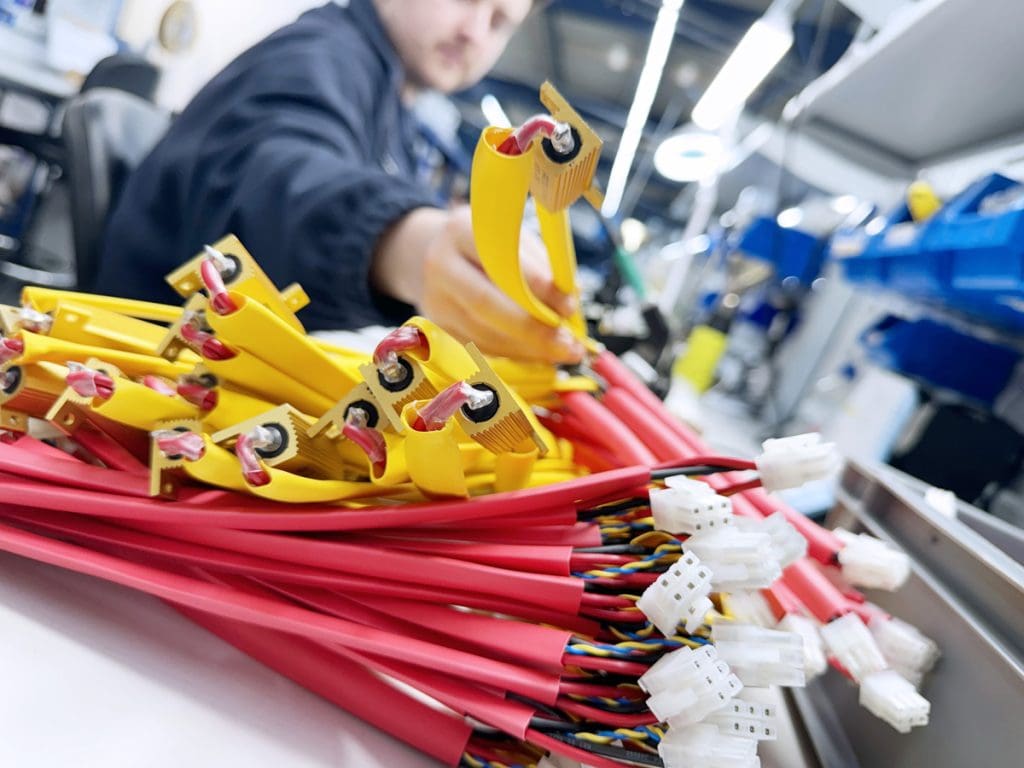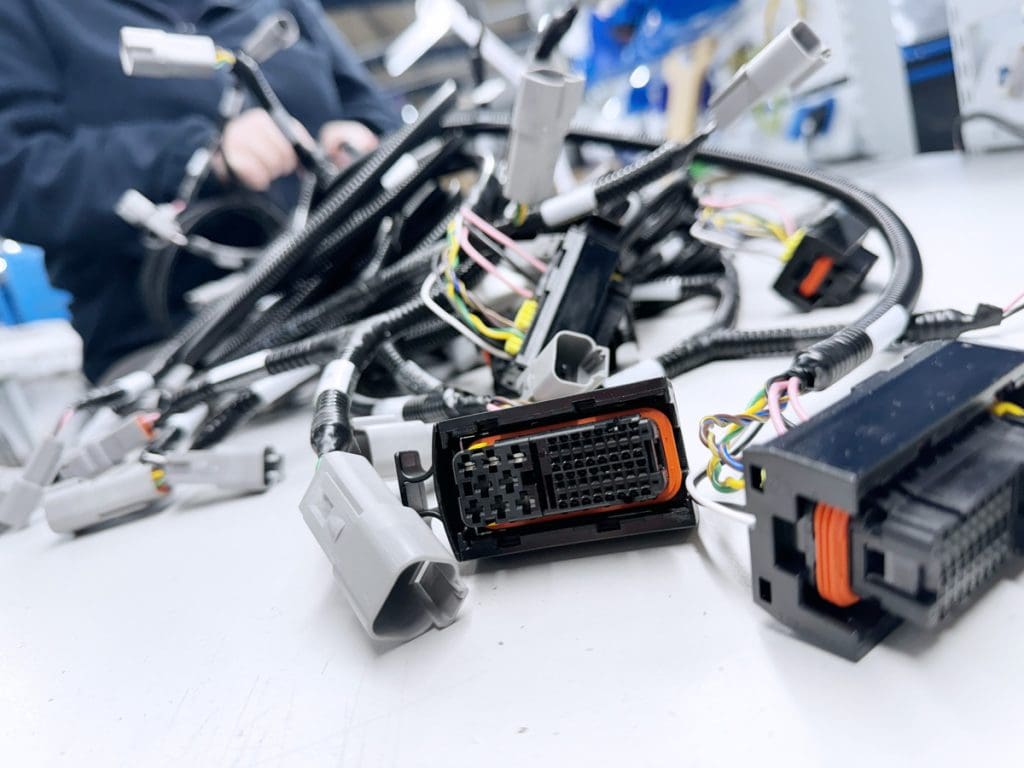Cable assemblies have evolved significantly over the years, thanks to the relentless pursuit of innovation and the development of new materials. The traditional materials used in cable assemblies are being replaced with more advanced and sustainable options, enhancing performance and functionality. This article explores the role of innovative materials in cable assemblies, highlights key materials making a difference in modern assemblies, examines the impact on design, and looks ahead towards future trends.
Understanding the Evolution of Cable Assemblies
The Traditional Materials in Cable Assemblies
For many years, cable assemblies were predominantly made using copper and aluminum for conductors, with rubber or PVC for insulation and jackets. These materials served their purpose well in providing electrical conductivity and mechanical protection. However, the demand for higher performance and greater efficiency has driven the need for innovation in cable assembly materials.
The Need for Innovation in Cable Assemblies
In recent times, the growing complexity of modern systems and the increasing demand for faster data transmission, improved signal integrity, and greater durability have pushed the boundaries of traditional materials. As a result, manufacturers have sought out new materials that can meet these evolving requirements.

The Role of Innovative Materials in Cable Assemblies
Enhancing Performance with New Materials
Innovative materials have opened up new possibilities for cable assemblies. For instance, high-performance alloys like nickel-based superalloys and titanium offer superior electrical conductivity, corrosion resistance, and mechanical strength compared to traditional materials. These alloys enable cable assemblies to operate at higher temperatures and withstand harsh environmental conditions.
Furthermore, advanced polymers and plastics, such as polytetrafluoroethylene (PTFE), polyethylene terephthalate (PET), and polyether ether ketone (PEEK), have revolutionized cable insulation and jacketing. These materials provide exceptional electrical properties, heat resistance, and chemical resistance, ensuring optimal signal transmission and protection against external factors.
Sustainability and Eco-Friendly Materials
In addition to performance enhancements, the cable assembly industry is also embracing sustainable and eco-friendly materials. For example, bio-based plastics derived from renewable resources are being used as alternatives to traditional petroleum-based materials. These bio-based plastics reduce environmental impact without compromising functionality, making them a viable option for various cable assembly applications.
The adoption of eco-friendly materials aligns with the industry’s commitment to reducing carbon footprint and promoting sustainability. By using materials that are recyclable or biodegradable, cable assemblies can contribute to a greener future.
Key Innovative Materials in Modern Cable Assemblies
High-Performance Alloys
High-performance alloys, such as nickel-based superalloys and titanium, are playing a crucial role in modern cable assemblies. These alloys offer excellent electrical and mechanical properties. Their high conductivity and resistance to corrosion make them ideal for demanding applications where reliability and durability are paramount.
Moreover, high-performance alloys can be tailored to specific requirements, allowing for greater design flexibility. By selecting the appropriate alloy composition, cable assemblies can be optimized for various performance parameters, including temperature resistance, mechanical strength, and electrical conductivity.
Advanced Polymers and Plastics
Advanced polymers and plastics have revolutionized the insulation and jacketing of cable assemblies. Materials such as PTFE, PET, and PEEK provide excellent electrical insulation, heat resistance, and chemical resistance. They are also lightweight and flexible, allowing for easier installation and routing of cables.
Additionally, advanced polymers and plastics offer extended service life by providing superior resistance to environmental factors, including moisture, UV radiation, and extreme temperatures. These materials ensure the longevity and reliability of cable assemblies in a wide range of applications, from aerospace and automotive to telecommunications and industrial sectors.

The Impact of Innovative Materials on Cable Assembly Design
Design Flexibility and Customisation
One of the significant advantages of innovative materials in cable assemblies is the increased design flexibility they offer. Traditional materials limit the complexity and customization of cable designs. However, with the introduction of advanced materials, manufacturers can create intricate cable assemblies tailored to specific applications and requirements.
Customization enables cable assemblies to be optimized for performance, space constraints, and ease of installation. This flexibility ensures that cable assemblies can seamlessly integrate into various systems, ranging from sophisticated electronic devices to large-scale industrial machinery.
Durability and Longevity Improvements
Innovative materials have significantly improved the durability and longevity of cable assemblies. The use of high-performance alloys and advanced polymers ensures that assemblies can withstand harsh environmental conditions, including temperature extremes, moisture, and chemical exposure.
The enhanced durability translates into increased reliability, reduced maintenance costs, and minimized downtime. Cable assemblies that incorporate innovative materials can continue to perform optimally, even in demanding applications and challenging operating environments.
Future Trends in Cable Assembly Materials
Predictions for Upcoming Material Innovations
The cable assembly industry is continuously evolving, and new material innovations are on the horizon. Researchers and manufacturers are exploring various avenues, including nanotechnology, to develop materials with even greater performance capabilities.
In the near future, nanomaterials, such as carbon nanotubes and graphene, may find their way into cable assemblies. These materials exhibit remarkable electrical conductivity and mechanical strength, making them ideal candidates for high-frequency applications and miniaturized devices.
The Role of Nanotechnology in Cable Assemblies
Nanotechnology holds great promise for the cable assembly industry. It enables the manipulation of materials at the molecular level, leading to enhanced electrical and mechanical properties. Nanoscale features can improve signal transmission, reduce power losses, and increase the overall performance of cable assemblies.
While nanotechnology is still in its early stages of implementation, ongoing research and development are expected to bring significant advancements to the cable assembly materials domain. These developments will drive innovation and shape the future of cable assemblies beyond what we can currently envision.

Frequently Asked Questions
- Why are innovative materials important for cable assemblies? Traditional materials have limitations in terms of performance, durability, and customizability. Innovative materials offer improved electrical and mechanical properties, as well as greater design flexibility, allowing cable assemblies to meet the evolving demands of modern systems.
- How do innovative materials enhance cable assembly performance? Innovative materials, such as high-performance alloys and advanced polymers, provide better electrical conductivity, corrosion resistance, heat resistance, and mechanical strength. These properties enhance signal transmission, durability, and the ability to withstand harsh environmental conditions.
- Are innovative materials sustainable? Yes, the cable assembly industry is actively incorporating sustainable and eco-friendly materials. Bio-based plastics derived from renewable sources and recyclable materials help reduce environmental impact and promote sustainability without compromising functionality.
- What are some key innovative materials used in modern cable assemblies? High-performance alloys, such as nickel-based superalloys and titanium, are essential in modern cable assemblies. Advanced polymers like PTFE, PET, and PEEK are also widely used for insulation and jacketing.
- How do innovative materials impact cable assembly design? Innovative materials provide increased design flexibility, allowing for intricate and customized cable assembly designs. They also enhance durability, enabling cable assemblies to withstand harsh conditions, and improving overall reliability and longevity.
In conclusion, innovative materials are revolutionizing cable assemblies and pushing the boundaries of performance and design. High-performance alloys and advanced polymers are enabling cable assemblies to meet the increasing demands of modern systems, while sustainable materials contribute to a greener future. As the industry continues to explore new materials, such as nanomaterials, the future of cable assemblies holds even more exciting possibilities. With each innovation, cable assemblies are becoming more efficient, reliable, and adaptable to a wide range of applications.
As the industry pushes forward with innovative materials, Cornelius Electronics stands at the forefront, ready to deliver the next generation of cable assemblies tailored to your needs. With over four decades of expertise in contract manufacturing and a state-of-the-art 50,000 square foot facility, we are dedicated to providing partnership-focused solutions and high-quality components. If you’re looking to harness the benefits of advanced materials for your cable assembly requirements, get in touch with us today and explore how we can support your projects with our cutting-edge technology and experienced team.

